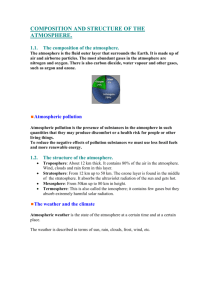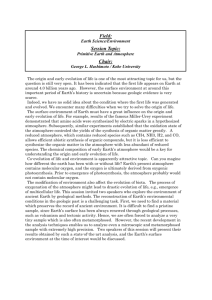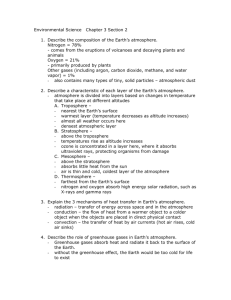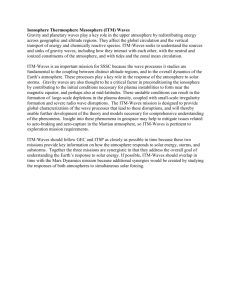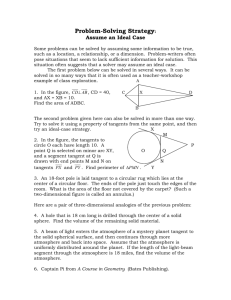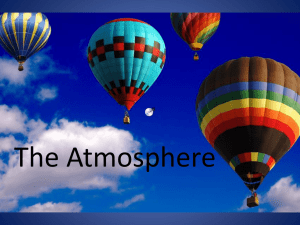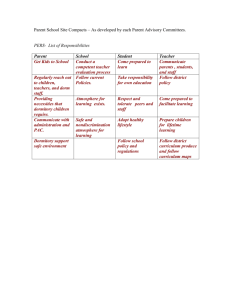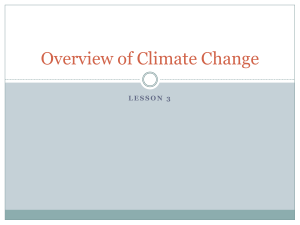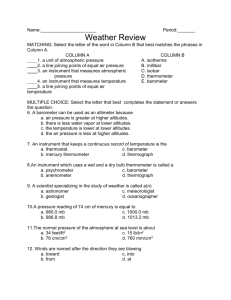enr 1102: atmospheric processes
advertisement
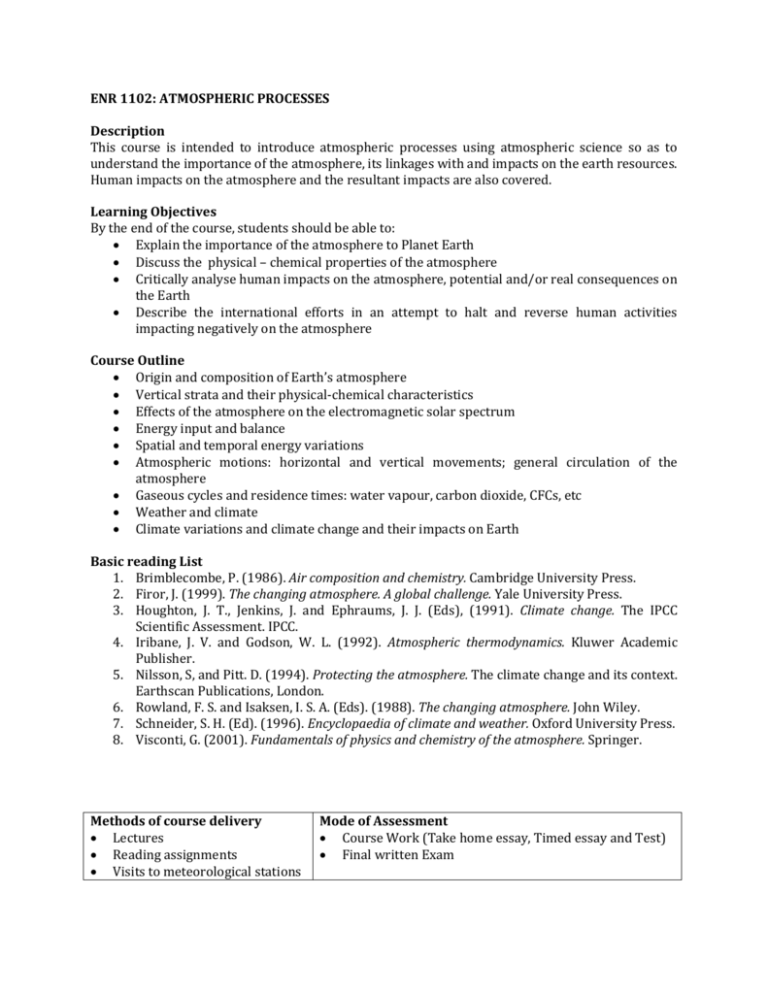
ENR 1102: ATMOSPHERIC PROCESSES Description This course is intended to introduce atmospheric processes using atmospheric science so as to understand the importance of the atmosphere, its linkages with and impacts on the earth resources. Human impacts on the atmosphere and the resultant impacts are also covered. Learning Objectives By the end of the course, students should be able to: Explain the importance of the atmosphere to Planet Earth Discuss the physical – chemical properties of the atmosphere Critically analyse human impacts on the atmosphere, potential and/or real consequences on the Earth Describe the international efforts in an attempt to halt and reverse human activities impacting negatively on the atmosphere Course Outline Origin and composition of Earth’s atmosphere Vertical strata and their physical-chemical characteristics Effects of the atmosphere on the electromagnetic solar spectrum Energy input and balance Spatial and temporal energy variations Atmospheric motions: horizontal and vertical movements; general circulation of the atmosphere Gaseous cycles and residence times: water vapour, carbon dioxide, CFCs, etc Weather and climate Climate variations and climate change and their impacts on Earth Basic reading List 1. Brimblecombe, P. (1986). Air composition and chemistry. Cambridge University Press. 2. Firor, J. (1999). The changing atmosphere. A global challenge. Yale University Press. 3. Houghton, J. T., Jenkins, J. and Ephraums, J. J. (Eds), (1991). Climate change. The IPCC Scientific Assessment. IPCC. 4. Iribane, J. V. and Godson, W. L. (1992). Atmospheric thermodynamics. Kluwer Academic Publisher. 5. Nilsson, S, and Pitt. D. (1994). Protecting the atmosphere. The climate change and its context. Earthscan Publications, London. 6. Rowland, F. S. and Isaksen, I. S. A. (Eds). (1988). The changing atmosphere. John Wiley. 7. Schneider, S. H. (Ed). (1996). Encyclopaedia of climate and weather. Oxford University Press. 8. Visconti, G. (2001). Fundamentals of physics and chemistry of the atmosphere. Springer. Methods of course delivery Lectures Reading assignments Visits to meteorological stations Mode of Assessment Course Work (Take home essay, Timed essay and Test) Final written Exam
